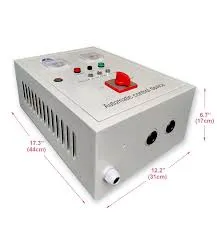The Versatile Applications of White Floor Tape
In both industrial and commercial settings, floor tape has emerged as an indispensable tool for enhancing safety, organization, and efficiency. Among the various types of floor tape available on the market, white floor tape stands out for its versatility and effectiveness. This article will explore the numerous applications of white floor tape, its benefits, and the reasons why it has become a preferred choice for many establishments.
What is White Floor Tape?
White floor tape is a heavy-duty adhesive tape designed to mark floors for a variety of purposes. It is typically made from durable materials like vinyl or polyester, providing a strong hold even in high-traffic areas. The tape often features a high-visibility white color, making it easy to see and recognize across various flooring types. This makes it especially useful in environments where clear communication is essential for safety and efficiency.
Applications in Safety and Navigation
One of the primary uses of white floor tape is to enhance safety in industrial and commercial workplaces. In warehouses, factories, and retail stores, clear floor markings can indicate walkways, hazardous areas, or the boundaries of equipment zones. By demarcating these areas with white tape, employers can significantly reduce the risk of accidents related to slips, trips, and falls.
In addition to marking pathways, white floor tape can guide foot traffic in busy settings
. For instance, in hospitals or large retail spaces, it can be used to create directional arrows, leading customers or patients to exits, restrooms, or service areas. Such visual cues ensure a smoother flow of movement and can assist in emergency evacuations, where clarity of instructions is paramount.Space Management and Organization
white floor tape

Beyond safety, white floor tape plays a crucial role in space management and organization. In warehouses, for example, it can be used to outline storage locations for pallets or equipment, helping to maximize the use of space. Marking these areas clearly prevents clutter and confusion, leading to an increase in efficiency and productivity.
In offices or retail environments, white floor tape can facilitate organization by indicating designated areas for certain tasks or activities. For instance, it can serve as a boundary for assembly lines, product displays, or check-out areas, ensuring that employees and customers alike understand where they should stand or move.
Durability and Maintenance
The durability of white floor tape is another factor that contributes to its popularity. Designed to withstand heavy foot traffic and the wear and tear of various environments, high-quality floor tape can last for months or even years without requiring replacement. Moreover, it is often resistant to stains, chemicals, and moisture, making it suitable for both indoor and outdoor applications.
Maintenance is relatively easy as well; cleaning around the tape does not require special treatment, and it adheres well to different types of flooring, including concrete, wood, and tile. When it eventually needs replacing, removing the tape is straightforward, and it leaves minimal residue behind.
Conclusion
In summary, white floor tape has solidified its position as a multifunctional tool in a variety of settings. Its applications range from ensuring safety and facilitating navigation to enabling effective space management and organization. The durability and ease of maintenance further bolster its appeal. As workplaces continue to evolve and adapt to new challenges, the use of white floor tape remains an efficient solution for promoting safety and operational efficiency. For businesses looking to enhance their work environment, investing in white floor tape may prove to be a small yet impactful decision.
-
Self Amalgamating Tape: Waterproof Electrical Insulation & SealingNewsAug.30,2025
-
Self Amalgamating Tape: Waterproof Electrical & Pipe SealNewsAug.29,2025
-
Medium Voltage Fusion Tape | Self-Fusing Electrical InsulationNewsAug.28,2025
-
Butyl Rubber Tape for Ventilation PipesNewsAug.22,2025
-
Flex Tape Waterproof for Underground CablesNewsAug.22,2025
-
Flame Retardant Tapes for Circuit InsulationNewsAug.22,2025
